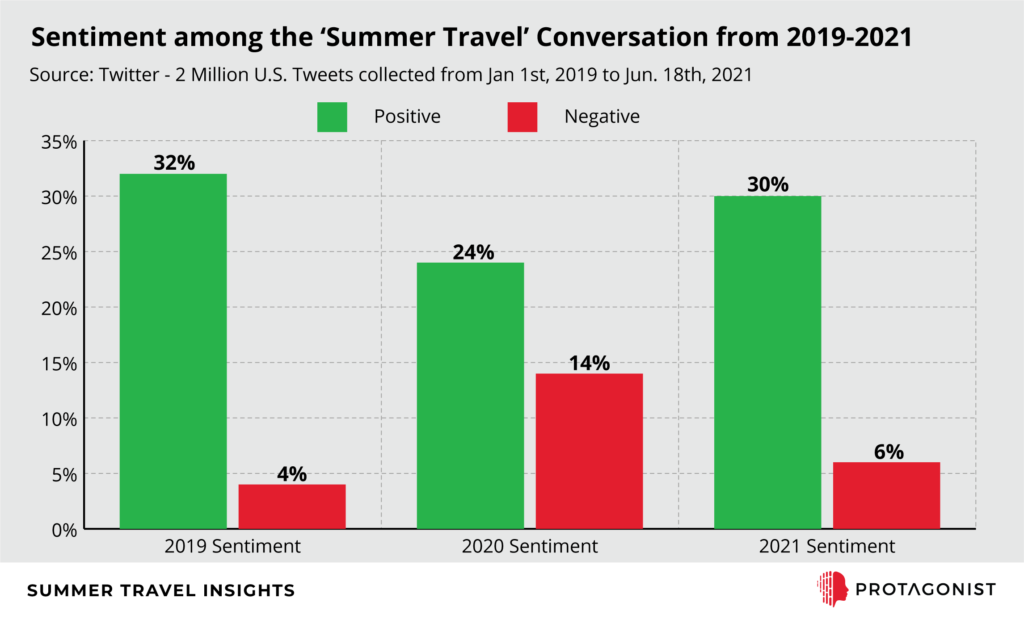It’s officially summer, when we traditionally enjoy neighborhood barbecues, outdoor concerts, and especially travel. The pandemic, of course, has changed all that. As the country slowly gets back to normal we were curious to see how attitudes toward summer travel have shifted. Are people ready to get back to traveling, how are they feeling about doing so, and how does that compare to “normal” life pre-pandemic? In this piece, we explore the answers to these questions by analyzing over one million social media expressions about summer travel in the January-June time period for 2019, 2020, and 2021.
As one might expect, attitudes toward summer travel have changed significantly through the past few years. The graph below shows that, in a normal year like 2019, positive expressions about making travel plans and enjoying trips usually very significantly outweigh negative expressions about missing flights, lost luggage, and the like. Perhaps surprisingly, in 2020 people still expressed themselves positively about summer travel, although a good deal of those positive expressions came in January-March, before it was apparent that summer 2020 travel would almost disappear entirely. And, for obvious reasons, negative conversation in 2020 more than tripled previous year levels.
We were most curious to see how 2021 is shaping up. Despite coronavirus variants and differing levels of vaccination in the country, Americans are almost back to normal levels of sentiment toward summer travel. People are feeling very positive about finally being able to go on vacation again, with only a small layer of pandemic complaint (for instance, about mask wearing in airports) taking negative expressions above pre-COVID levels.

The volume of summer travel conversation also tells a very interesting story about when people engage with the topic. As the graph below shows, in a normal year like 2019, summer travel conversation tends to spike in March as people make travel plans and then again in May as they get close to actual travel. Interestingly, 2020, despite it being the beginning of the pandemic, followed the same pattern—likely people were still holding out hope that the summer could potentially return to normal.
2021, on the other hand, shows a completely different pattern, with a slow build through May and June rather than a spike. As noted above, the sentiment balance has been returning to normal, but volume patterns tell a different story.

As we dug into the data, and the broader Narrative Landscape around travel, it became apparent that the steady pace of US vaccination progress was likely a factor in the gradual growth of 2021 summer travel conversation. The timeline below shows how vaccination milestones corresponded to growth in the summer travel conversation, with each new achievement in the vaccination effort corresponding to an incremental increase in the summer travel conversation.

Rather than follow a normal-year pattern with spikes driven by planning periods, people have aligned their engagement with summer travel based on the pace of society’s reopening. Shifts like these in the reasons people think and act are at the heart of Narrative Analytics—understanding these changing mindsets can help companies and other organizations better understand and serve their constituents.


